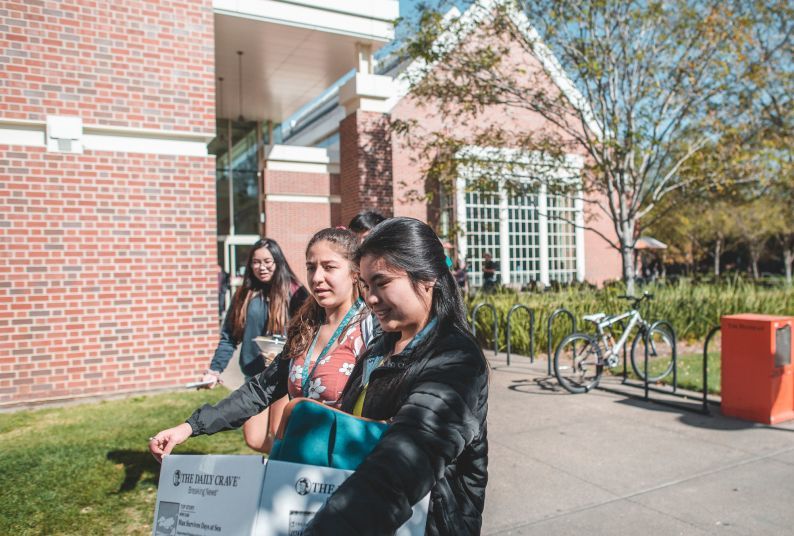In 2021, the Javits Center in New York city completed construction of a $1.5 billion expansion on the north side of its campus, adding over one million square feet spread over five floors — with a working rooftop farm. This week, the Salesforce World Tour took over the behemoth space for one day. It had previously touched down in Boston and Tokyo.
We took the opportunity to sit down with Rob Garf, VP and GM retail, to talk about prospects for retail and ecommerce coming off of a booming Cyber Week in late November.
Why the World Tour? The Salesforce World Tour is not something new, but it’s less familiar than Dreamforce, of course, and arguably Salesforce Connections, the annual conference with a focus on marketing and commerce.

“It’s really about bringing the magic to areas where we have a high concentration of customers,” Garf said. “Not everyone can get to some of our cornerstone events, so we just want to bring our community together. It’s also really nice for our partners too because they haven’t necessarily been able to get out there in the world and see their customers — or our mutual customers — so they’re using this as a bit of a halo event and having other peripheral events around it.”
The retail roller coaster. While ecommerce soared during the pandemic, brick-and-mortar retail faced challenges. Since then, despite the ongoing supply chain crisis and rumors of recession, ecommerce and retail seem to be resilient. Cyber Week saw a record-breaking $281 billion in global online sales.
This insight, and others described below, is based on aggregated data from the online activity of over 1.5 billion global shoppers in more than 60 countries powered by Commerce Cloud, as well as Marketing Cloud and Service Cloud data from retailers.
Dig deeper: Online retail kicks off holiday season with record sales
“A roller coaster is a good way to describe it,” said Garf. “We saw a real surge in digital because people, unless it was essential, were unable to go into physical stores. Over the course of 2020, we saw a 40% increase in net new digital shoppers according to our Shopping Index. These were people who would go online, send emails, check out social, but they weren’t clicking the buy line. And these people were buying whole new categories as well — think about grocery.”
There’s been a levelling off in digital commerce over the last year, but Garf doesn’t believe digital and physical stand in opposition any more. “What I’m talking with retailers about more and more is how they streamline the experience the consumer has on mobile out of the store, to when they actually come into the store so it’s not this disjointed experience.”
The journey works in the other direction too. “Our research shows that 60% of digital orders are now influenced by the physical store.” As an industry we’ve looked at it the other way, which makes sense; but we’re now seeing the reverse phenomenon.”
A quiet start to the holiday season. After a spike ahead of Amazon’s Prime event — likely caused by other retailers discounting ahead of Amazon — there was a dip in sales approaching Cyber Week. Over Cyber Week itself, however, there was a 9% increase in sales YoY in the U.S. (2% globally).
“The reason was that retailers started the season with lackluster deals,” Garf explained. “Consumers noticed; they waited and were patient; and it paid off.” Garf regards this as a game of “discount chicken.” Retailers start the holiday season with a planned discount calendar. “After the first weekend, they rip it up, call an audible and chase the deal — which is a race to the bottom.”
After the last two years of delivery and inventory problems, retailers thought consumers were now conditioned to buy early. That’s why they didn’t kick-off with their best deals. “Consumers snapped back to their pre-pandemic buying. With the aggressive deals we saw during Cyber Week, there was a correlation, more than we’ve ever seen, between discounts and purchases.
Mobile and social commerce trends. “People weren’t on the go the last couple of years during the holidays,” said Garf. “We saw a re-balancing toward desktop. This year we saw a spike, compared to the last two years, in mobile traffic and purchases — and traffic referrals through social on mobile devices.”
Around Cyber Week, roughly 75% of traffic was mobile, and — dependent on category — around 60% of orders. The reason? People are traveling again. “On Thanksgiving, we saw a spike in sales between 6 p.m. and 10 p.m. and on mobile in particular.”
Dig deeper: What is ecommerce and which trends are shaping its future?
Slack for retail. Salesforce now sees a key role for Slack, acquired two years ago, in the retail space. “We see retailers taking it beyond the technology function for collaboration and bringing it into the store for collaboration and communication,” said Garf. Not only can there be in-store communications, but stores can communicate with each other.
“We’re seeing some stores and service agents communicate with suppliers to establish visibility into when products will be available. They’re swarming on it immediately; you don’t have to wait two weeks for an email.”
Why we care. The lesson for all marketers, not just those in commerce is, first, that the pendulum is still swinging; second, that it’s a multi-dimensional pendulum. During the pandemic, it swung from mobile to desktop, and — okay — it’s swinging back again. But although it swung from physical to digital, it’s now swinging in a different direction, towards a bidirectional relationship between physical and digital (research on mobile, buy in store; or, see in store, buy digitall).
That pendulum is going to keep swinging. That is, unless we’re on the brink of an extended period of peace and well-being for the planet — and who’s betting on that? It’s incumbent upon marketers to observe very closely the direction in which buyers are headed and understand that the customer journey still has levels of complexity yet to be achieved.
Get MarTech! Daily. Free. In your inbox.









